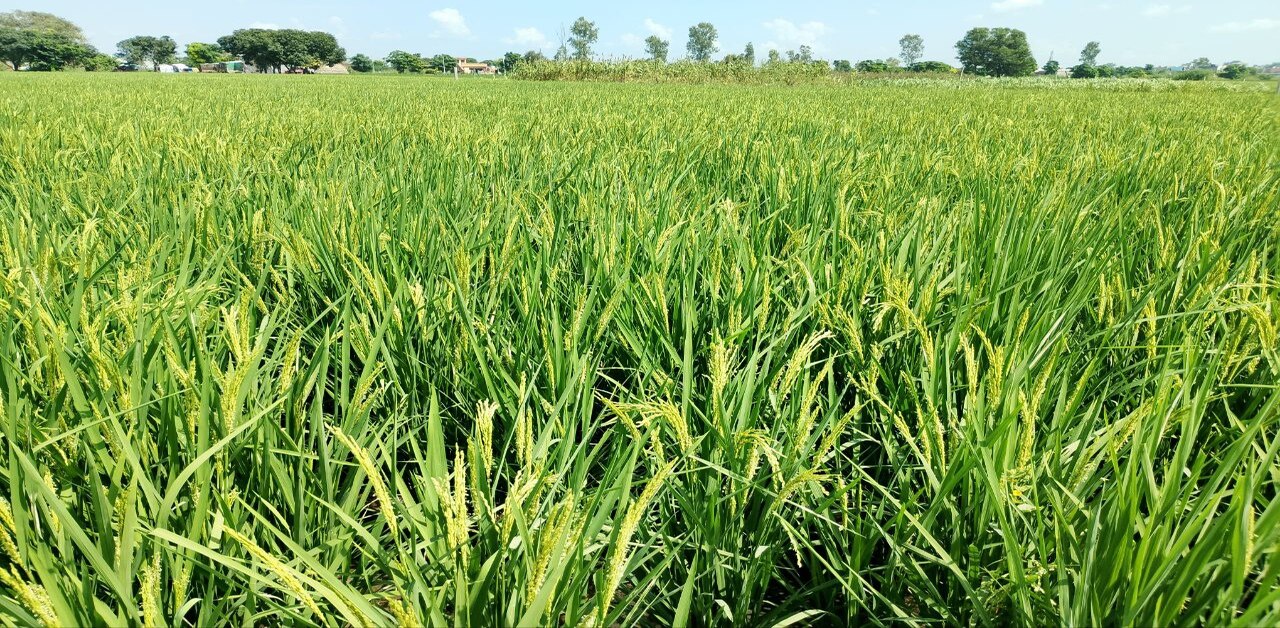Rice has long been recognized as one of the most significant cereal crops( rice cultivation) in the world, as it is a staple food for over half of the world’s population.
Rice in such countries as India, China, Indonesia, Bangladesh, and many others is not only food, but also cultural and economic support.
The development of grain must be a delicate combination of appropriate climatic conditions, fertile soils, the presence of water, and the application of modern technology.
Learning about rice production is key to food security and the sustainable growth of agriculture.
In this article, rice cultivation will be discussed in complete detail, including the cultivation methods, diseases, and pests, etc. If you want to read about rice cultivation, then you are in the right place.
Table of Contents
About the Rice/Paddy(Oryza Sativa)
- Botanical name: Oryza sativa.
- Family name: Poaceae(Gramineae).
- Chromosome Number: 2n=24.
- Inflorescence: Panicle.
- Its origin is from Indo-Burma(Myanmar/Southeast Asia).
- Its fruit type is Caryopsis.
- The test weight of rice is 25 gm, and the test weight of basmati rice is 21 gm.
- Pollination: Self-Pollinated.
- Germination: Hypogeal.
- The smell (Aroma) produced by rice is due to ”Di-acetyl 1 propaline”.
Rice with husk is called Hulled Rice(Paddy), and without husk is called Brown Rice. Policed & milled rice is known as White rice.
To pay special attention to rice, the world celebrated International Rice Year in 2004.
Institutes
- Central Rice Research Institute(CRRI)– Cuttack, Odisha was established in 1946.
- International Rice Research Institute( IRRI)-Manila, Philippines, was established in 1960.
- IRRI-South Asia Regional Center-Varanasi started on 24 December 2018.
- Indian Institute of Rice Research(IIRR), Hyderabad(1965), formally known as the Directorate of Rice Research.
- All India Coordinated Rice Improvement Project(AICRIP), Rajendra Nagar, Hyderabad, was established in 1965.
Food Value
Rice contains 6-7 % protein, which is the lowest among the crops. 2-2.5 % Fat content and a low amount of Calcium(Ca) in it. It has 78.2 % Carbohydrate.
Rice Protein is called Oryzein. Rice is deficient in the Lysine amino acid.
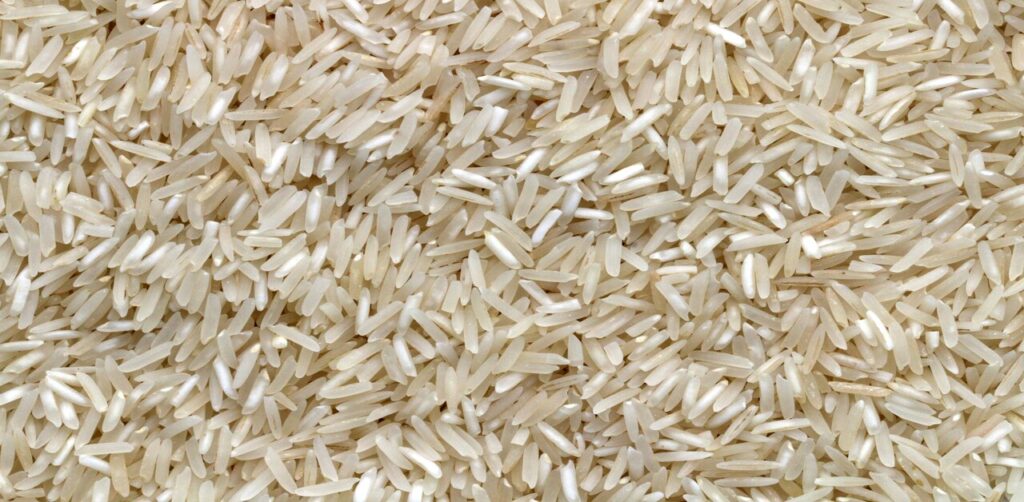
Importance of Rice Cultivation
The cultivation of rice is mainly due to several reasons:
1. Staple Food Crop: It is the main source of calories for billions of people.
2. Economic Value: It is benefiting millions of farmers and is adding a lot of economic power to agriculture.
3. Employment: Rice farming brings about job creation in rural areas and provides livelihoods.
4. Cultural Value: Rice in most Asian nations is closely connected to traditions, festivals, and even social practices.
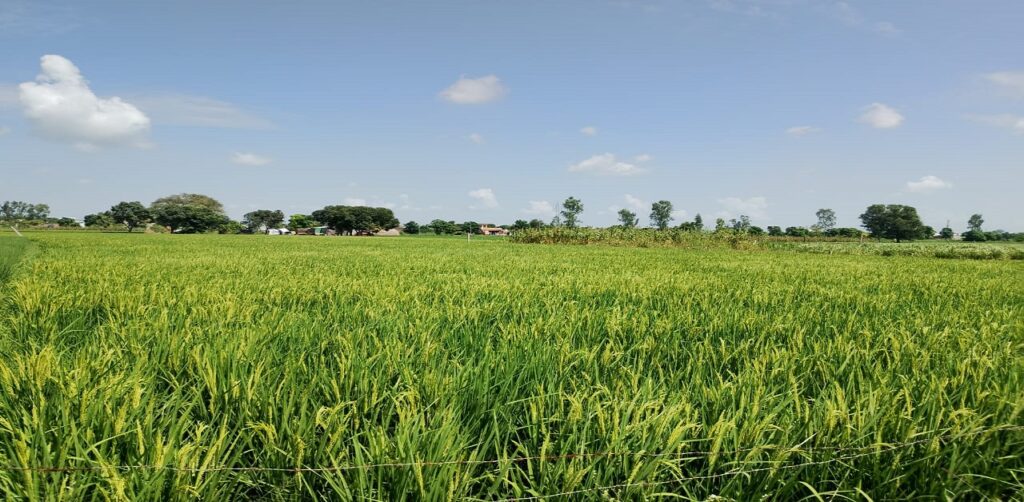
Suitable Conditions for Rice Cultivation
Rice is extremely climate sensitive. Special conditions are necessary to grow successfully:
1. Climate
- Rice is a product that thrives in the temperature of the tropics and subtropics.
- It is a short day and a C3 plant.
- Temperature: The optimum temperature required in the cultivation of rice is 20 °C -37°C.
- Rainfall: Rainfall in the range of 100 to 200 cm in a year is required. However, low rainfall can be supplemented by irrigation.
- Humidity: High humidity is preferred in the growth of rice.
2. Soil
- Rice is cultivated in fertile loamy soil, clayey soil, or alluvial soil. It can be cultivated in acidic soil.
- Ideal PH is 4.0-6.0.
- The soil must be adequately water-retentive because the rice needs standing water.
3. Water
- Rice is a semi-aquatic crop and requires a lot of water.
- It requires 100-150 cm of average annual rainfall.
- During the growing season, 5-10cm of Water is commonly required in fields.
4. Topography
- The best fields for rice cultivation are lowland regions, floodplains, and river valleys.
- Terrace farming is also used in hilly areas such as North-East India and Southeast Asia.

Methods of Rice Cultivation
The methods vary based on climatic conditions, type of soil, and availability of water.
The major methods include:
1. Wet or lowland cultivation
- This is the most popular method in Asia.
- Water is run into the fields, and transplantation of seedlings takes place.
- Better weed control and the availability of nutrients also make high yields available.
2. Dry or upland cultivation
- Grown in regions that receive less rain or do not have enough irrigation.
- Without waterlogging, the seeds are planted in the field.
- The yields are relatively low.
3. Broadcasting Method
- The seeds are merely thrown over the field.
- It needs fewer runners but will lead to an imbalanced growth.
If you want to buy a bag for your school or college journey, then you should visit here.
4. Drilling Method
- A seed drill is used to plant the seeds in rows.
- This procedure provides adequate spacing and weeding.
5. Transplanting Method
- The most effective and popular method for rice cultivation.
- Initially, seeds are sown in a nursery. Seedlings are transplanted into the main field after 25-35 days.
- Such a process gives healthy harvests and increased production.
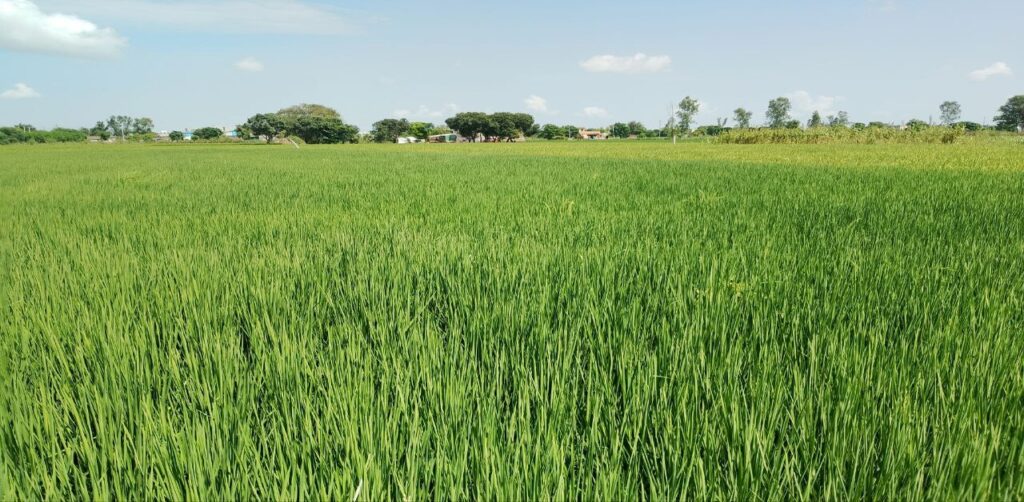
Stages of Rice Cultivation
Rice farming passes through several stages:
1. Land Preparation
- Arable fields are plowed, and reclamation is done.
- Irrigation canals are generated.
- Fertility is increased with the use of organic manure.
2. Nursery Preparation
- Planting of seeds in nurseries takes place.
- Transplantation of healthy seedlings is done.
3. Transplantation
- Proper spacing is done and seedlings transplanted in rows.
- This prevents inadequate aeration and a deficiency in nutrients.
4. Water Management
- It is necessary to hold standing water (5-10 cm).
- Before harvesting, fields are drained.
5. Weed and Pest Control
- Manual weeding, herbicides, and integrated pest management are practiced.
6. Fertilizer Application
- It is applied with nitrogen, phosphorus, and potassium (NPK) in order to grow well.
- Organic manure improves the fertility of the soil.
7. Harvesting
- Done 110-150 days upon planting, according to the variety.
- The crops are cut when the grains become golden yellow.
8. Threshing and Storage
- Threshing separates grains from the husk.
- To avoid spoilage, it is necessary to store and dry properly.
Modern Techniques in Rice Cultivation
To fulfill the growing demand for grain, there are some modern techniques:
1. High-Yielding Varieties (HYVs): HYVs were cultivated as a part of the Green Revolution and yield more grain per hectare.
2. System of Rice Intensification (SRI): A contemporary procedure that consumes less water and yields more produce through appropriate spacing and aeration of the soil.
3. Application of Biotechnology: Genetically enhanced types of rice are resistant to pests, diseases, and floods.
4. Mechanization: Tractors, transplanting, and harvesters lower labor expenses as well as enhance productivity.
5. Organic Farming: Planting of grain without the use of synthetic fertilizers and pesticides to satisfy the demand for eco-friendly food.
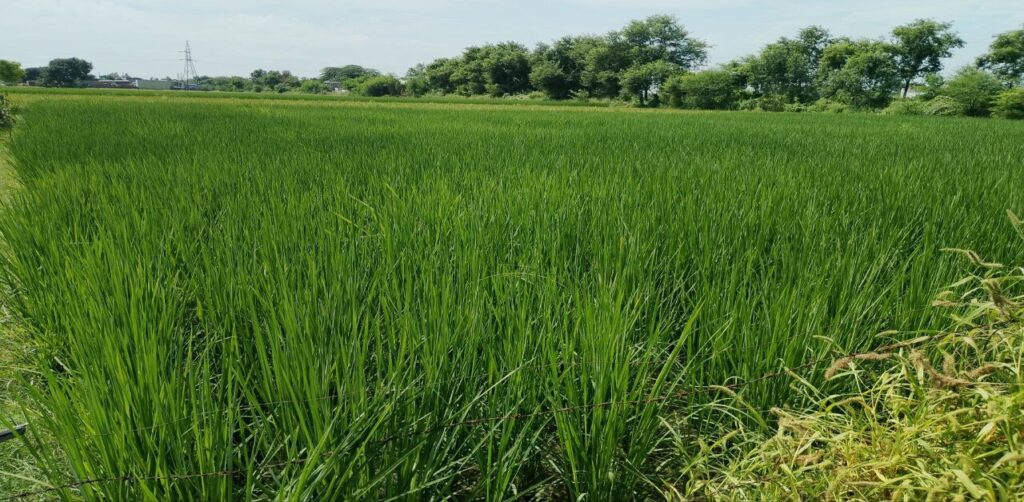
Challenges in Rice Cultivation
Despite its significance, it has several challenges:
1. Water Scarcity: Water resources are being strained through excessive irrigation.
2. Climate Change: Unpredictable rainfall, floods, and droughts have impacts on production. Rice crop contributes to global warming because Methane & N2O (Greenhouse gases) are emitted from rice fields.
3. Pest and Diseases: Diseases such as rice blast and insects such as stem borers decrease yield.
4. Increased expenses: An increase in labor and input costs decreases the profits of farmers.
5. Land Degradation: Overuse of fertilizers and pesticides makes the soil less fertile.
Major Rice Producing Regions
India produces the highest amount of rice(by area) in the world(India>China).
But in terms of production, China gained the highest position(China>India).
Rice is the main food crop of Asia as well as India. It is the staple food crop of approximately 65% of the country’s population. Asia produces approximately 90% of the world’s total rice.
Asia is the most productive, and the first four to lead are China, India, Indonesia, and Bangladesh.
In India, West Bengal(1st position), Uttar Pradesh, Andhra Pradesh, Punjab, Tamil Nadu, and Bihar are leading producers of rice in India.
If you want to read an article on kharif crops in detail, then you can click on it.
Conclusion
Rice cultivation is not a normal farm practice; it is the source of life for billions of people in the world. Its cultural significance, as a staple, source of economic value, and cultural value, is of vital significance.
The progress of modern methods, water-saving technologies, and sustainable production allows sustaining the growth of the food supply through rice production.
Sustainability in rice production is important to ensure that the world can have food security and that millions of farming families are able to survive.

